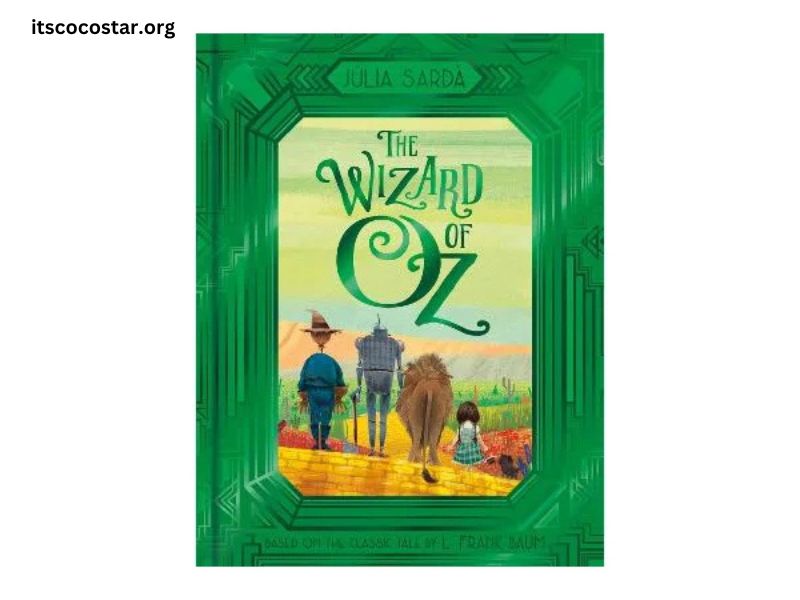The world of literature is rich with fantastical tales that capture the imagination of readers across generations. Among these, L. Frank Baum’s “The Wonderful Wizard of Oz” and its subsequent books stand out not only for their whimsical storytelling but also for their deep-seated cultural significance. Since the first publication in 1900, Baum’s works have enchanted millions, spawning adaptations, merchandise, and a lasting legacy that continues to resonate today.
The Origin of Oz
L. Frank Baum was born in 1856 in New York, and his early life was characterized by a series of entrepreneurial endeavors and theatrical pursuits. His diverse experiences, including managing a theater company and publishing a series of unsuccessful magazines, contributed to his unique storytelling style. The idea for “The Wonderful Wizard of Oz” reportedly came from a combination of influences: a desire to create an American fairy tale and the inspiration of a children’s book featuring a character named “Toto.”
The original book was published in 1900 and introduced readers to Dorothy Gale, a young girl from Kansas who is swept away to the magical land of Oz by a tornado. Along her journey, she meets iconic characters such as the Scarecrow, the Tin Woodman, and the Cowardly Lion, all of whom are on quests of their own. The story’s rich imagery and relatable themes of friendship, courage, and the search for home have contributed to its timeless appeal.
The Characters of Oz
One of the most compelling aspects of Baum’s work is the depth of his characters. Each one embodies unique qualities and struggles, making them relatable to readers of all ages.
- Dorothy Gale: The quintessential heroine, Dorothy’s journey is not just a physical one; it’s also an emotional and psychological journey toward self-discovery. Her desire to return home resonates with anyone who has ever felt lost or displaced.
- The Scarecrow: Often seen as a representation of the quest for intelligence, the Scarecrow’s journey reveals that wisdom often comes from experience and compassion rather than formal education.
- The Tin Woodman: He symbolizes the search for love and emotion. His desire for a heart underscores the idea that true fulfillment comes from the ability to care for others.
- The Cowardly Lion: A representation of the struggle with fear, the Lion’s journey teaches that courage often involves facing one’s vulnerabilities.
These characters, along with many others, create a tapestry of themes that explore the human condition. They invite readers to reflect on their own lives and the qualities they value.
The Magical Land of Oz
Oz itself is a character in its own right. Baum crafted a vibrant world filled with colorful inhabitants, from the Munchkins to the Wicked Witch. Each region of Oz, such as the Emerald City and the Land of the Winkies, is distinct and contributes to the narrative’s complexity. This imaginative geography not only serves as a backdrop but also plays a crucial role in the story’s unfolding.
The land of Oz is notable for its blend of whimsy and danger. Baum juxtaposes fantastical elements, such as flying monkeys and enchanted shoes, with darker themes like jealousy and the struggle for power. This duality adds layers to the story, making it appealing to both children and adults.
The Themes of Oz
At its core, “The Wonderful Wizard of Oz” is about self-discovery and the quest for identity. Each character’s journey reflects a universal search for qualities they believe they lack. This theme is particularly poignant in a rapidly changing society, as it was during Baum’s time. The turn of the century brought about significant shifts in American life, and Baum’s narrative resonated with those navigating these changes.
Additionally, the story is rich with commentary on societal issues. Some interpretations suggest that the characters symbolize various political and economic forces at play in America during Baum’s life. The Scarecrow has been linked to farmers, the Tin Woodman to industrial workers, and the Cowardly Lion to politicians. These interpretations offer a deeper understanding of the narrative, enhancing its relevance across different contexts.
The Legacy of Baum’s Works
Following the success of “The Wonderful Wizard of Oz,” Baum continued to write about the land of Oz, producing 13 additional novels. Each new installment introduced fresh characters and adventures, broadening the Oz universe. Notable sequels include “The Marvelous Land of Oz” (1904), “Ozma of Oz” (1907), and “The Emerald City of Oz” (1910).
Baum’s storytelling was pioneering in its own right. He created a series of interconnected stories that not only entertained but also expanded the literary genre of children’s fantasy. His imaginative narrative style and the fantastical world he built inspired countless authors and creators.
The success of the Oz series led to adaptations in various forms, the most famous being the 1939 film “The Wizard of Oz.” This adaptation, starring Judy Garland as Dorothy, became a cultural touchstone and remains a beloved classic. The film’s iconic music, vibrant colors, and memorable characters have ensured that the story of Oz transcends its original literary form, embedding it in popular culture.
Contemporary Interpretations and Adaptations
The impact of Baum’s Oz books continues to be felt in contemporary literature and media. Numerous adaptations, reimaginings, and sequels have emerged in various forms, from stage musicals to animated series. Notable adaptations include “Wicked,” a Broadway musical that reinterprets the story from the perspective of the Wicked Witch of the West, providing a fresh take on the classic tale.
In recent years, the literary world has also seen a resurgence of interest in Baum’s original texts. Publishers have released annotated editions that explore the historical and cultural context of the stories, offering new insights into Baum’s intentions and the era in which he wrote. Scholars have delved into the themes of the Oz series, analyzing its relevance in discussions around identity, power, and societal expectations.
The Oz Experience Today
Today, the legacy of L. Frank Baum and his creation of Oz is celebrated through various events and institutions. The town of Chittenango, New York, Baum’s birthplace, hosts an annual Oz-stravaganza, where fans gather to celebrate all things Oz with parades, performances, and panel discussions. Additionally, the National Museum of American History houses artifacts related to Baum and his works, further cementing the cultural importance of Oz in American history.
The Oz series continues to inspire new generations of readers, emphasizing the importance of imagination and storytelling in understanding our world. Baum’s works remind us that literature is not just a means of escape, but also a powerful tool for reflection and understanding.
Conclusion
L. Frank Baum’s “The Wonderful Wizard of Oz” and its sequels have become more than just stories; they are a rich part of our cultural heritage. Their blend of fantasy, adventure, and deep thematic exploration resonates with audiences of all ages. As we navigate our own quests for identity, belonging, and understanding, the lessons learned from the land of Oz remain timeless. Through the adventures of Dorothy and her friends, we are reminded of the power of courage, the value of friendship, and the importance of home—lessons that continue to echo in our hearts long after the last page is turned. The magic of Oz will endure, enchanting future generations as it has enchanted so many before.







